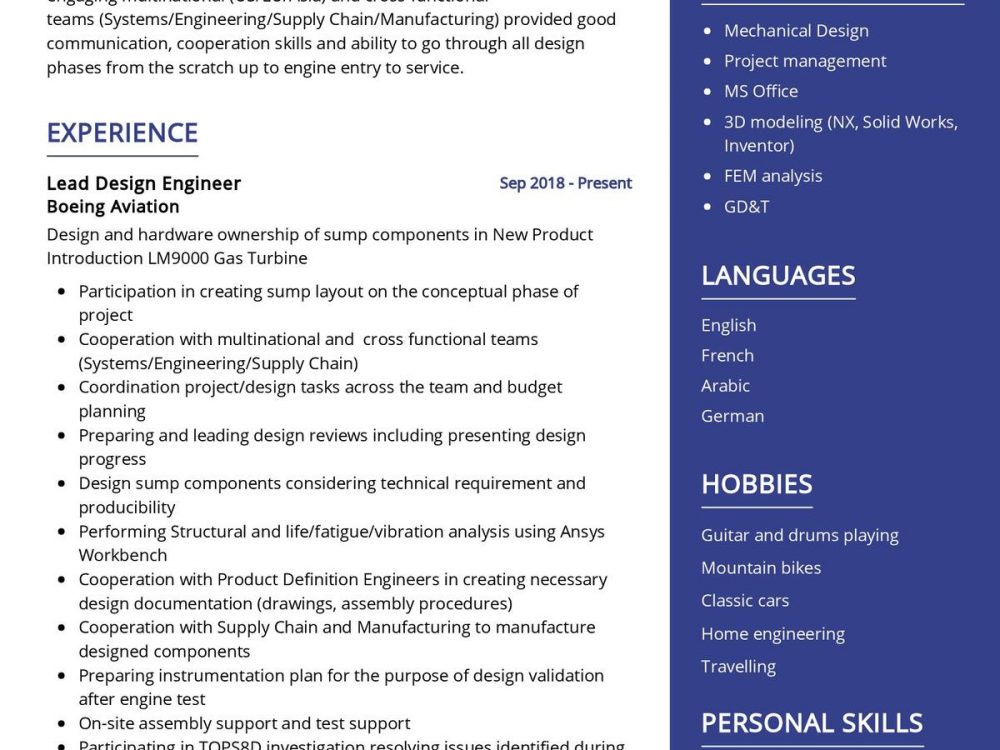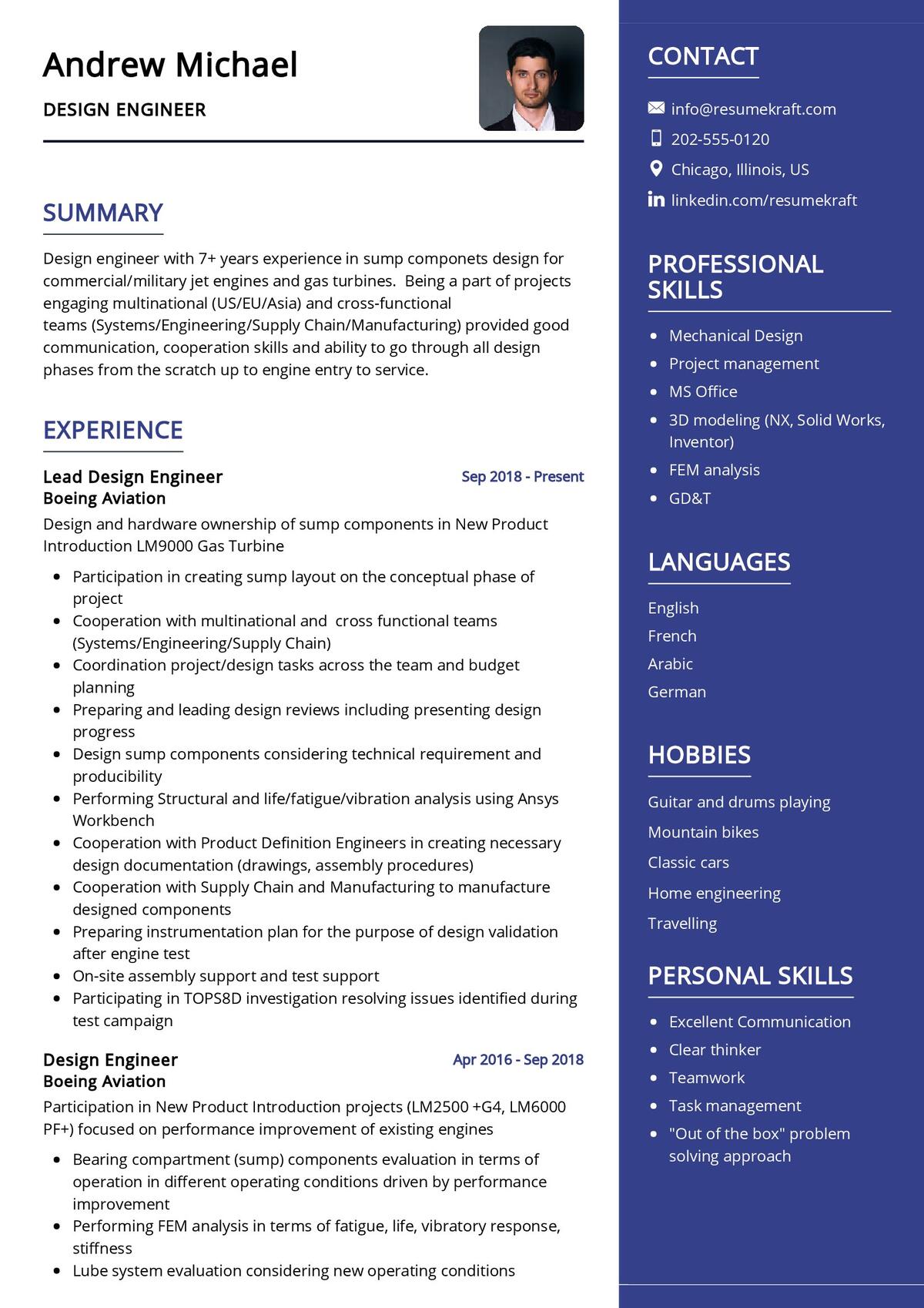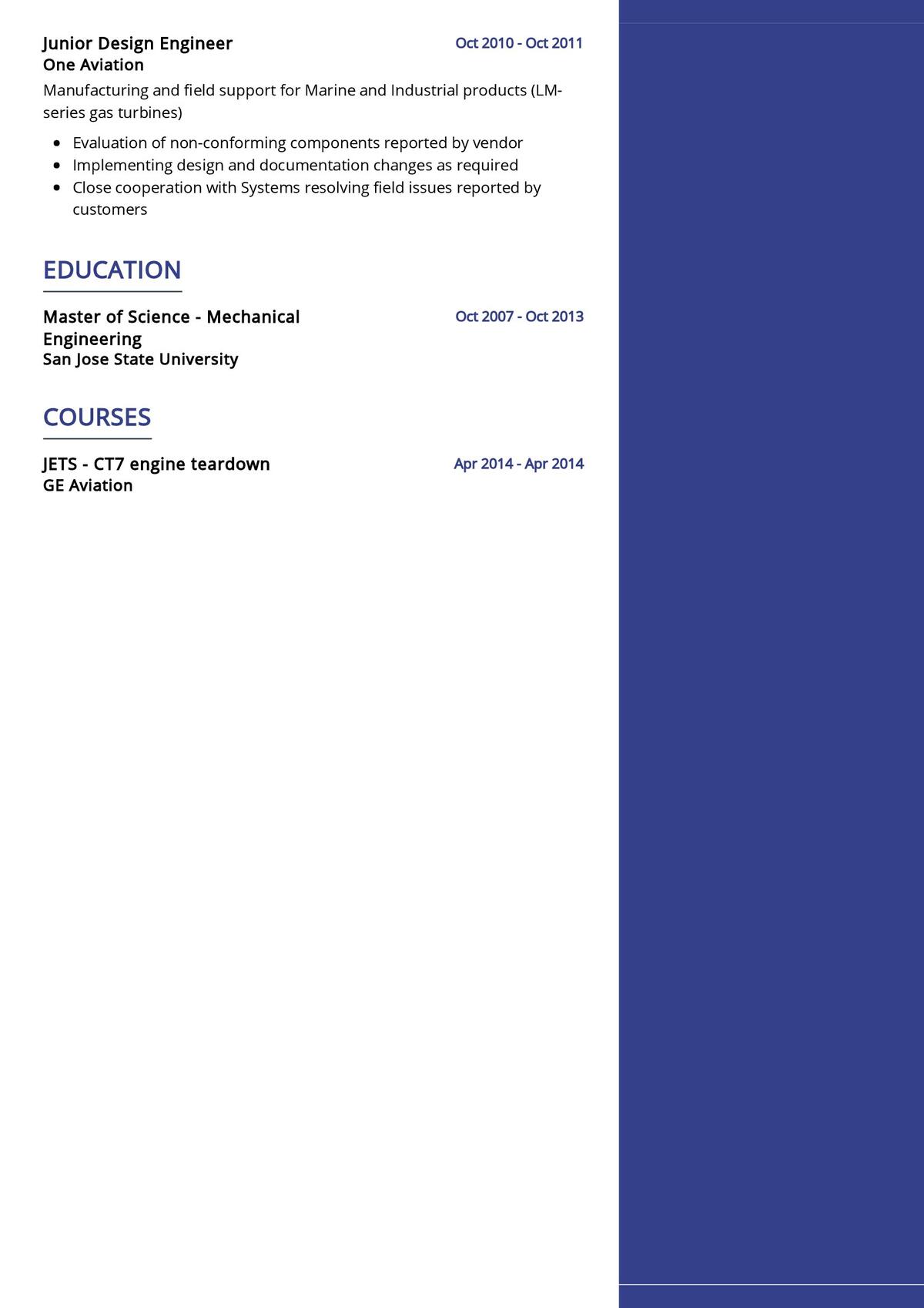What Should Be Included In A Design Engineer Resume?
Design engineering is a field that requires a vast range of technical skills and knowledge. Writing a resume for a design engineer position can be a daunting task, as it requires you to make sure you highlight all of your skills and experiences that match the job opening. To make sure your resume stands out and catches the eye of potential employers, there are certain key elements that you should include.
The most important part of your design engineer resume is a summary statement. This is a short paragraph that gives a brief overview of your qualifications, skills, and experience in the field. You should include relevant keywords from the job description and focus on how your experience and skills will benefit the company.
It is also important to include your education and any certifications or licenses you have obtained. Make sure to list any specific software or engineering programs you are familiar with, such as CAD, CAM, or MATLAB.
In the Work Experience section, list all the design engineering positions you have held, including any relevant projects you have worked on. Describe your responsibilities, the challenges you faced, and any positive outcomes of the project. You should also list any design awards or accolades you have earned.
Finally, it is important to include a section highlighting any achievements, awards, or professional development courses you may have completed. This will show employers that you are dedicated to your professional growth and growth within the field.
By following these guidelines, you will be sure to create a compelling and professional design engineering resume that will make you stand out from the crowd. Make sure to use your keyword research to ensure you highlight all of your relevant qualifications and experiences. With a great resume, you will be sure to land the job of your dreams.
What Skills Should I Put On My Resume For Design Engineer?
As a design engineer, your job is to create innovative products and systems. That’s why it’s important to include a range of skills on your resume that demonstrate your ability to do just that. When you’re crafting your resume, it’s important to include skills that highlight your technical expertise, communication abilities, and creativity.
When creating your resume, you should include a mix of skills related to your technical expertise, such as CAD software and engineering design, as well as soft skills that relate to working with a team.
When it comes to technical skills, you should list any software that you’re proficient in, such as AutoCAD, SolidWorks, Inventor, Pro/Engineer, and any other CAD or simulation packages. You should also list any industry-specific experience, such as medical device design or industrial machinery design. Additionally, you can list any programming or other technical skills you may possess.
In addition to technical skills, it’s important to show employers that you’re a well-rounded individual who can communicate effectively and work in a team environment. List skills like problem-solving, critical thinking, and project management. You can also add soft skills like communication, collaboration, and customer service.
Finally, it’s important to show employers that you have a creative mind and can come up with innovative ideas. Include skills like product design, prototyping, and product testing.
By showcasing your technical and soft skills, you’ll be able to demonstrate to employers that you’re a well-rounded candidate who’s a great fit for the role.
What Is The Job Description Of The Design Engineer?
A Design Engineer is responsible for developing and designing products, components, and other equipment for a company. They are responsible for creating detailed plans, models, and drawings to ensure that the product meets the company’s needs and specifications. They must be knowledgeable in a wide range of topics such as engineering principles, material science, manufacturing processes, and CAD/CAM software.
Design Engineers must be highly analytical and possess excellent problem-solving skills. They must be able to evaluate customer needs and develop products to meet them. They must also be able to analyze a product’s functionality, cost-effectiveness, and safety. They must be able to identify and address potential problems before the product is manufactured.
Design Engineers must also be highly organized and have the ability to multitask. They must be able to manage a variety of projects at the same time while adhering to strict deadlines. They must be able to communicate effectively with peers, supervisors, and customers. They must also be able to work independently and in teams.
Overall, Design Engineers must have a deep understanding of engineering principles and be able to apply them to develop innovative, cost-efficient products that meet customer needs and specifications. They must be creative and have the ability to think outside the box. They must also have strong problem-solving and organizational skills.
What Is A Good Objective For A Design Engineer Resume?
A good objective for a Design Engineer Resume should be concise and clearly communicate your job target and the value you can bring to the employer. The objective should explain what you have to offer and your career goals. It should also provide information about your skills, qualifications, and experience that relate to the position.
When writing a design engineer resume, focus on highlighting your technical skills and experience. Include a brief summary of the projects you have worked on, which should include the tools used and the results achieved. Demonstrate your problem-solving skills and ability to work independently, as this is an important aspect of a design engineer’s job.
Your objective should also include any certification or degrees you may have. This will show the employer that you are dedicated to the field and are well-versed in the latest design engineering technologies. It is also important to focus on being a team player, as design engineers often work with different departments and collaborate with colleagues in order to achieve the desired results.
Finally, it is important to be honest and realistic. A design engineer’s job can be challenging, and it is important to be realistic about what you can achieve. Be sure to tailor your resume objective to the job you are applying for and keep it specific and unique. This will help the employer to get a better understanding of what you can bring to the position.
What Are The Career Prospects In The Design Engineer?
Design engineering is an exciting and rewarding field to pursue, and the career prospects of a design engineer are very promising. As a design engineer, you can expect to work in a variety of industries, from automotive to aerospace to medical and beyond. You will be responsible for developing solutions to technical problems and designing products that meet customer needs. You will also be expected to be able to use a variety of computer-aided design (CAD) software, as well as have an understanding of the various engineering disciplines.
Design engineers typically have the opportunity to work in a team environment, often collaborating with other engineers, designers, and production personnel. This means that you must be able to work collaboratively and diplomatically in order to achieve successful results. You should also be able to think and work creatively in order to come up with innovative solutions to problems.
Design engineers will also need to be able to work with customers to ensure that the products they design meet their needs. This requires excellent communication and negotiation skills. Design engineers must also be able to clearly explain technical concepts in a way that can be understood by a variety of audiences.
In terms of career prospects, design engineering is a field that is expected to remain in high demand for the foreseeable future. With the advancement of technology, the need for design engineers who can create and implement innovative solutions is increasing. Design engineers are also in high demand in the automotive, aerospace, medical, and consumer electronics industries, making this an attractive career path for those who are looking for a challenging and rewarding career.
Key Takeaways for an Design Engineer resume
Creating an effective resume for a Design Engineer position is critical to achieving success in the job application process. There are certain key elements that must be included in order for your resume to be successful. Below are some essential takeaways for Design Engineers when writing a resume:
- Focus on your engineering qualifications. As a Design Engineer, you need to highlight your technical skills, such as design and drafting experience, knowledge of engineering CAD software, and any other relevant qualifications. Make sure to add any relevant certifications or qualifications to your resume as they can be insights into your abilities and experience.
- Include a portfolio of your work. As a Design Engineer, you will be called upon to show evidence of your work. Make sure to include a portfolio of your best work in your resume; this will demonstrate your capabilities to employers.
- Highlight your team collaboration skills. Working as a Design Engineer requires strong team collaboration. You need to show that you have the ability to work cooperatively with other engineers, designers, and technicians.
- Show your problem-solving skills. As a Design Engineer, you need to demonstrate that you have the skills to identify problems and develop solutions. Showcase any problem-solving achievements in your resume in order to demonstrate your potential to potential employers.
By focusing on these key takeaways for Design Engineers, you can ensure that your resume stands out from the rest when applying for a Design Engineer position. Make sure to include the necessary qualifications and experience, highlight your team collaboration and problem-solving skills, and show off your portfolio of work. With a strong design engineer resume, you can be sure that you are making the best impression possible to potential employers.



